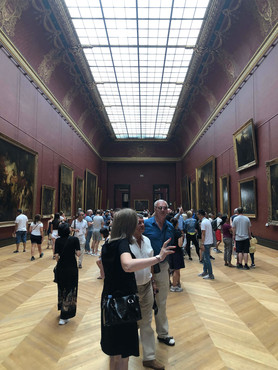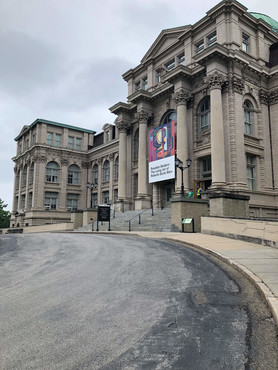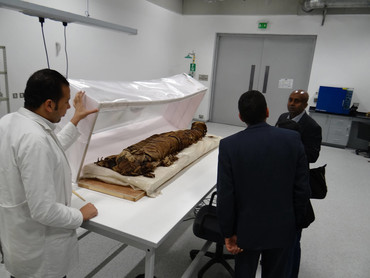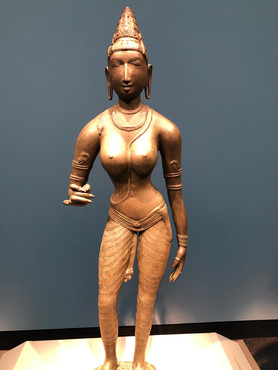International Museum Day 2020 stresses upon equality, diversity and inclusion
by Dilpreet Bhullar, Stirworld. Published on : May 18, 2020
The COVID-19 pandemic has turned International Museum Day to one-of-its-kind opportunity to lead the conversation on and explore hitherto unviable possibilities around museums.
International Museum Day (May 18), otherwise a busy day with events across the museums in different parts of the world, this time greets the uncertainty of lockdown with a majority of museums closed or partially opened for viewing in the wake of COVID-19 until further notice. The unprecedented times like these have renewed attention on the importance of cultural spaces and urged us to rearrange the format of our ways of seeing art and celebrating it as a creative force. The International Council of Museums (ICOM), along with an array of museums across the globe, has devised a slew of online activities and forums to host the International Museum Day 2020, dedicated to this year’s theme ‘Museums for Equality: Diversity and Inclusion’ and beyond.

Interiors of Louvre Museum, Paris.
Image Credit: Courtesy of Vinod Daniel
This year’s theme holds a promise of togetherness when the emphasis on resilience is the order of the day. Pertinently, this year the International Museum Day (IMD) lays a particular focus on four sustainable development goals: Reduce Inequality; Gender Equality; Peace, Justice, Strong Institutions; and Climate Action, to generate new opportunities of creating more inclusive and equal societies. Interestingly, the last year theme of ‘Museums as Cultural Hubs: The Future of Tradition’ carries a deeper resonance with the issues pertaining to the pandemic crisis that has urged us to develop a historical dialogue with the cultures of our traditional past for a better future. As an active witness to the global impact of the COVID-19 simultaneously, we are given a grim reminder of the layers of fragmented society based on social bias and inequality.

The Metropolitan Museum of Art, New York.
Image Credit: Courtesy of Vinod Daniel
Established 43 years back by ICOM, the International Museum Day aims to reinforce that museums are the vibrant sites of cultural exchange that forge a relationship of mutual understanding among people of a variety of cultures, identities, beliefs and languages. As the museum peak body, ICOM represents over 50,000 museum professionals and 20,000 museums from over 140 countries. Vinod Daniel, Chair AusHeritage and Board Member International Council of Museums (ICOM), in an interview with STIR, sheds lights on the measures undertaken by ICOM to overcome the impact of pandemic crisis when he says, “ICOM has also developed resource materials to assist museums at the end of the lockdown for ensuring the safety of the public and staff. These are available through the website, ICOM is also currently discussing a number of additional knowledge dissemination mechanisms for museums across the world to benefit from. A large global survey on the impact of COVID-19 on museums and museum professionals is also underway.”

Mummy Restoration Project, The Grand Egyptian Museum
Image Credit: Courtesy of Vinod Daniel
To effectively establish the human and historical context of the museums in the current day world of saturated cyberspace and technology, first, let us trace the etymology of museums to the classical origins mous ‘nine muses of the Greek mythology’ and suffix -eion ‘of place’. Through the early Renaissance period to the age of modernism, the museum as an institution dictated the dominant discourse on its collections. With the dawn of postmodernism, the emphasis on the infrastructural ownership took a backseat and a plethora of new-age museums — open-air museums, virtual museums — redefined the dynamics of the museums. Furthermore, with the creative minds at work, novelist Orhan Pamuk’s Museum of Innocence and photographer Dayanita Singh’s Museum Bhavan lend a distinctive mode of narrative on the everyday life and objects as a part of the collective memory within the framework of a museum.

Queen Sembiyan Mahadevi as the Goddess Parvati, National Museum of Asian Art, Smithsonian Museum, Washington, D.C.
Image Credit: Courtesy of Vinod Daniel
Like any institution, the survival of the museum is directly proportionate to its ability to reinvent itself in an effort to create a unique and enriching experience. The pandemic has once again reiterated this quest to meet the new ways of looking and perceiving the richness available in the museums. In the pre-COVID-19 times, the virtual tour was a choice offered by many museums. However, with the changing times when new norms are enforced, these tours are likely to be part of regular practice. Taking cognizance of the situation, Daniel agrees, “Limitations on physical access encourage more virtual access programs. Virtual online programs may assist in the museum reaching out to more audiences, including audiences in remote parts of India and in other countries, and hence fulfil their mission better as well as additional revenue generation if appropriate mechanisms are developed.” Even if the format to represent the collection may shift from the on-site experience to a virtual thrill, the aim to assign higher meaning to the artefact by taking into account the interest of each viewer remains unwithered with the ushering in of the waves of change.

Sambandar, the child saint, National Museum of Asian Art, Smithsonian Museum, Washington, D.C.
Image Credit: Courtesy of Vinod Daniel
Closer to home, it would be of interest to see how the Indian museums are going to shape post COVID-19 crisis. Daniel expounds upon the scenario, “Other than increasing virtual access, this may be an opportunity for Indian museums, which are mostly public-funded, to start functioning more independently, such as CSMVS in Mumbai. This would allow for longer-term planning, more revenue generation through external support and innovative programming to make it more attractive for audiences.”
The continual reprisal of the cultural institutes with a balance between aesthetic delight, democratic knowledge dissemination and infrastructural appreciation is as consequential as the recognition of human values and accountability. Daniel reassures the museum enthusiasts and larger public that museums would have relevance despite the pandemic crisis, when he says, “Museums are and will continue to be a safe and trusted pillar for society. This crisis allows museums in India to rethink how they connect with society and possibly dream big. Being the Information Technology capital of the world, this would provide museums in India an opportunity to increase their audience numbers a hundred-fold, provide every Indian, irrespective of where they live, access to their heritage and provide students – especially in schools – a more engaging way to learn history and culture.”
When the doors of the museums open next year to celebrate the International Museum Day, to put it optimistically, the discussions would engage a broader community, and somewhere, someplace, a museum in some quarter of the globe would have connected yet-to-be-known slice of life with its curious audience.

Vinod Daniel, Chair AusHeritage and Board Member International Council of Museums (ICOM)
Image Credit: Courtesy of Vinod Daniel
To read the article, refer to:
